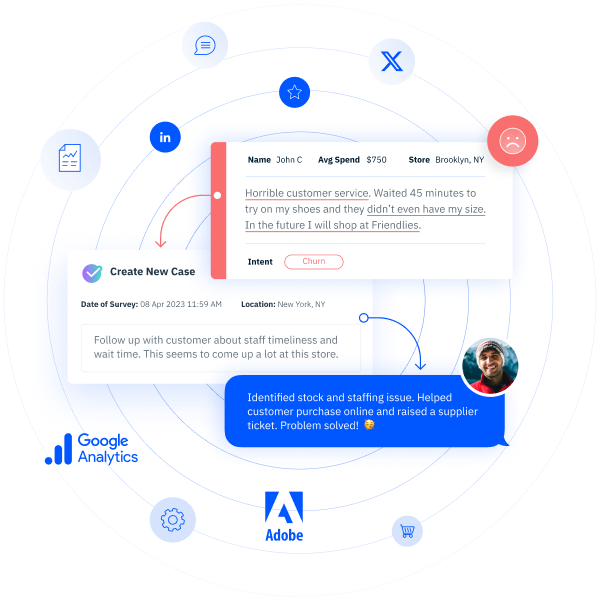
A lot of customer experiences hinge on your contact center’s effectiveness, which is why it’s important to ensure it’s a resource your customers find helpful, professional, and expedient.
However, building an effective, consistent contact center experiences can be overwhelming. That’s why we’ve taken everything we have learned by working with best-in-class brands and distilled those learnings into five simple steps you can follow to make sure you build a contact center that works for you, and works for your customers.
- Utilize Automation
- Explore Customer Issues to Create Self-Serve Content
- Engage and Enable Employees
- Data Is a Gold Mine
- Closing the Loop
Improve Contact Center Experience Step #1: Utilize Automation
The term ‘automation’ can scare customers because they often associate it with navigating phone trees and having to repeat themselves to a robot listener, but the truth is that automation is incredibly useful when contact centers leverage it correctly. Using automation within online chats, online reviews, or survey feedback, for example, allows your brand to direct customers to solutions for smaller problems. This frees your call center agents up to deal with more complicated problems while also reducing call volumes, saving your brand both time and money.
Improve Contact Center Experience Step #2: Explore Customer Issues to Create Self-Serve Content
Utilizing customer feedback to guide them toward solutions is a valuable practice, but it’s only one part of the equation. This feedback becomes even more valuable when you can harness a data platform that utilizes unstructured data analytics and creates actionable insights. This approach proves incredibly beneficial for identifying recurring issues faced by your customers, escalating these concerns to your development team, and creating relevant self-service resources to empower customers in resolving problems independently. Also, it also serves as a proactive strategy for safeguarding your customer experience, addressing potential issues before they even arise.
Improve Contact Center Experience Step #3: Engage and Enable Employees
While it’s not uncommon for brands to provide training for their employees in customer interactions, organizations can unlock even greater potential by actively encouraging their staff to share their unique perspectives on customer problems. This approach not only equips brands with insights into issues that customers might not have formally reported but also empowers employees to proactively drive Experience Improvement (XI) initiatives. By fostering a culture of open communication, brands can tap into the collective expertise of their workforce and gain a deeper understanding of customer pain points, leading to more effective solutions.
This collaborative approach also sends a powerful message to contact center employees, demonstrating that the organization values their input and is genuinely committed to using an integrated CX approach to improve customer experience. By turning employees from mere service providers into valued contributors to the customer-centric mission, brands can effectively transform detractors into enthusiastic promoters. In doing so, they not only improve customer satisfaction but also cultivate a great employee experience that is also an engaged workforce dedicated to delivering exceptional service.
Improve Contact Center Experience Step #4: Data Is a Gold Mine
Your brand generates mountains of data every day. Having a lot of information is great, but in this day and age, having so much of it can make figuring out where to start difficult. We’ve found that contact center improvement hinges on three kinds of data: customer feedback, social media data, and web analytics. You can complete the puzzle of Experience Improvement by using this information as a foundation for unlocking your organization’s voice of the customer (VoC). Having all of this data in one place gives your brand a united, holistic perception of the customer, which is vital to knowing how you might make some fixes and refinements to your contact center.
Improve Contact Center Experience Step #5: Closing the Loop
The value of closing the loop cannot be stressed enough. It’s not actually enough to stop at solving the problem; following up with your customers afterward goes a long way toward making them feel cared about as people. In other words, a follow-up lets customers know you’re as interested in the relationship they have with your brand as the transaction. Follow up with employees, too! Not sure where to start? Check out this resource that outlines the 7 steps for implementing a closed loop system!
Gathering intel and opinions from all these folks will give you chances to improve both your contact center and your overall customer experience, strengthening human connections and your bottom line.
Click here to learn even more about these processes in our full-length contact center eBook. We take a deep dive into additional methods and best practices you can leverage to begin improving your contact center, customer experience, and employee experiences today!



